Prasunika Khare
AI and conventional methods for UCT projection data estimation
Aug 17, 2021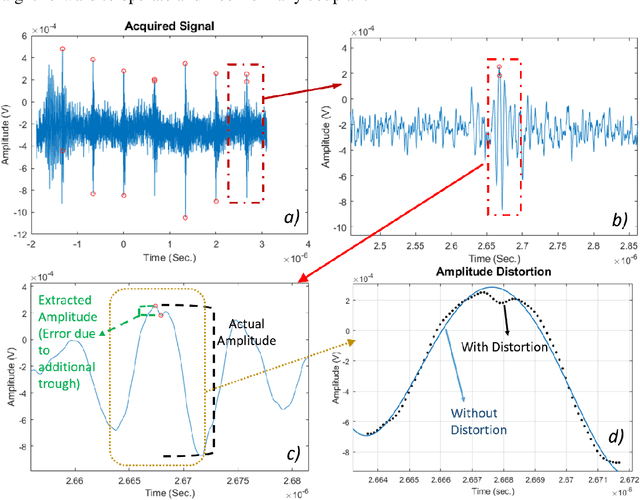
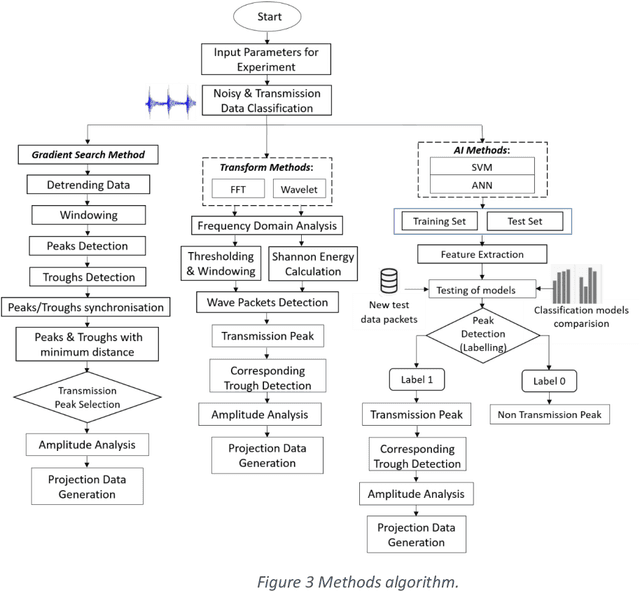
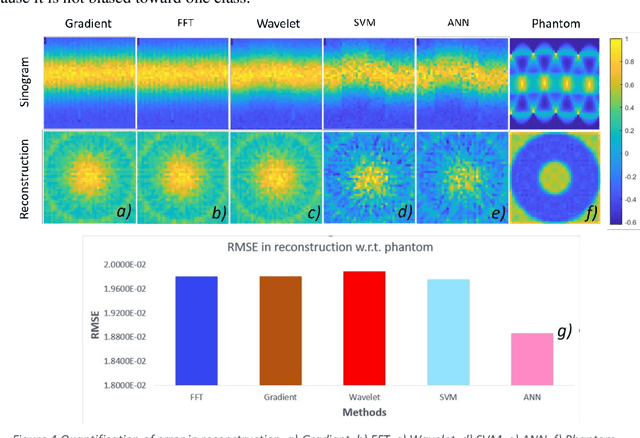
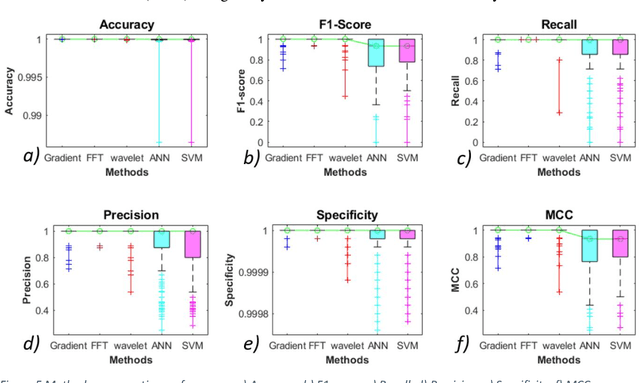
Abstract:A 2D Compact ultrasound computerized tomography (UCT) system is developed. Fully automatic post processing tools involving signal and image processing are developed as well. Square of the amplitude values are used in transmission mode with natural 1.5 MHz frequency and rise time 10.4 ns and fall time 8.4 ns and duty cycle of 4.32%. Highest peak to corresponding trough values are considered as transmitting wave between transducers in direct line talk. Sensitivity analysis of methods to extract peak to corresponding trough per transducer are discussed in this paper. Total five methods are tested. These methods are taken from broad categories: (a) Conventional and (b) Artificial Intelligence (AI) based methods. Conventional methods, namely: (a) simple gradient based peak detection, (b) Fourier based, (c) wavelet transform are compared with AI based methods: (a) support vector machine (SVM), (b) artificial neural network (ANN). Classification step was performed as well to discard the signal which does not has contribution of transmission wave. It is found that conventional methods have better performance. Reconstruction error, accuracy, F-Score, recall, precision, specificity and MCC for 40 x 40 data 1600 data files are measured. Each data file contains 50,002 data point. Ten such data files are used for training the Neural Network. Each data file has 7/8 wave packets and each packet corresponds to one transmission amplitude data. Reconstruction error is found to be minimum for ANN method. Other performance indices show that FFT method is processing the UCT signal with best recovery.
AI Algorithm for Mode Classification of PCF SPR Sensor Design
Jul 19, 2021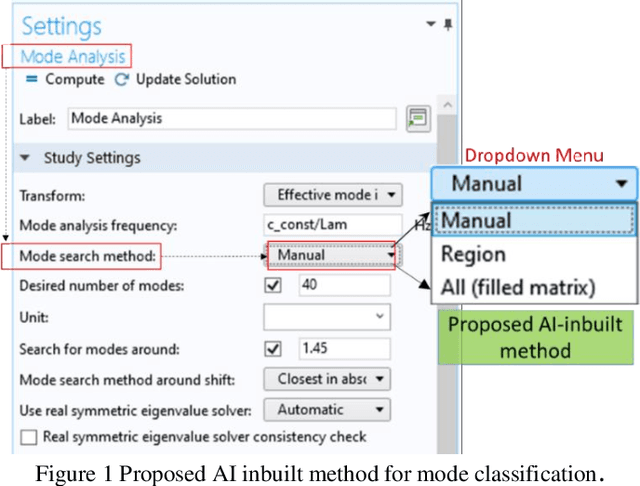

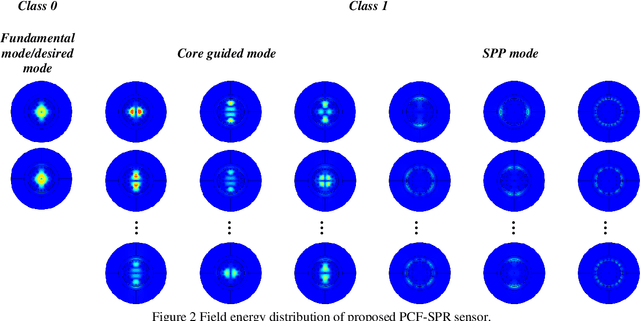

Abstract:Photonic Crystal Fiber design based on surface plasmon resonance phenomenon (PCF SPR) is optimized before it is fabricated for a particular application. An artificial intelligence algorithm is evaluated here to increase the ease of the simulation process for common users. COMSOL MultiPhysics is used. The algorithm suggests best among eight standard machine learning and one deep learning model to automatically select the desired mode, chosen visually by the experts otherwise. Total seven performance indices: namely Precision, Recall, Accuracy, F1-Score, Specificity, Matthew correlation coefficient, are utilized to make the optimal decision. Robustness towards variations in sensor geometry design is also considered as an optimal parameter. Several PCF-SPR based Photonic sensor designs are tested, and a large range optimal (based on phase matching) design is proposed. For this design algorithm has selected Support Vector Machine (SVM) as the best option with an accuracy of 96%, F1-Score is 95.83%, and MCC of 92.30%. The average sensitivity of the proposed sensor design with respect to change in refractive index (1.37-1.41) is 5500 nm/RIU. Resolution is 2.0498x10^(-5) RIU^(-1). The algorithm can be integrated into commercial software as an add-on or as a module in academic codes. The proposed novel step has saved approximately 75 minutes in the overall design process. The present work is equally applicable for mode selection of sensor other than PCF-SPR sensing geometries.
 Add to Chrome
Add to Chrome Add to Firefox
Add to Firefox Add to Edge
Add to Edge